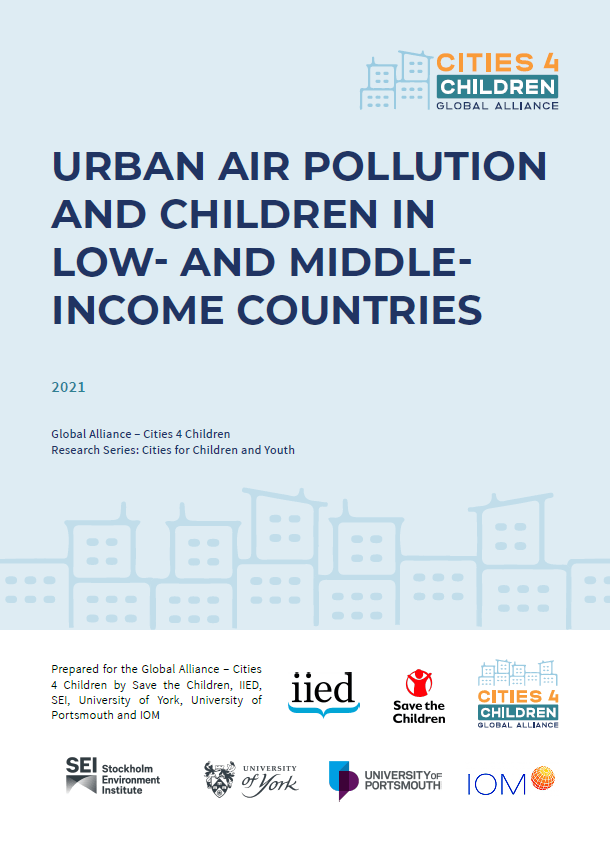Urban Air Pollution and Children in Low- and Middle- Income Countries
Author(s): Sarah West (Stockholm Environment Institute - University of York), Miranda Loh (Institute of Occupational Medicine), Chris Malley (Stockholm Environment Institute - University of York) and Cressida Bowyer (University of Portsmouth)
Language: English
This evidence into action brief summarises the state of research on the topic of urban air pollution in low- and middle-income countries and its impacts on children, and proposes ideas for action.
Air pollution is a major global health challenge to which children are particularly vulnerable. In this briefing, the authors summarise the literature on this topic, focusing on low- and middle-income countries (LMICs). There are indoor and outdoor sources of air pollution and these pollutants can remain in the local area or be transported vast distances. Therefore, to reduce air pollution emissions and exposure to pollution, action is needed at local, national and international levels. In many cases, these actions can contribute to achieving multiple other sustainable development goals, including climate change mitigation. An integrated approach to action is needed, involving collaboration with community members, planners and policymakers.
- Invest in regulatory air pollution monitoring stations and provide training on data management and how to interpret the data. This will highlight the extent of pollution in places where monitoring is lacking.
- Support the development of air quality management systems (including air-quality regulations and standards on emissions) to monitor and reduce air pollution, particularly in urban areas.
- Develop citizen science monitoring programmes to fill the gaps in monitoring. Scientists and community members should work together to answer scientific questions, collect data and co-design awareness-raising campaigns at community level.
- Work with governments to integrate air pollution into climate change targets. Many sources of greenhouse gases are also sources of air pollutants. LMICS can increase their mitigation ambitions, meet international targets and achieve local development benefits through improved air quality.
The Research Series: Cities for Children and Youth is published by the Global Alliance – Cities 4 Children. This series includes publications reflecting on a range of issues faced by urban children and youth and will shed light on promising initiatives and practices for sustained change. The series aims to inspire action, add to knowledge, improve program/project design and advocate for children’s and young people’s rights in the urban agenda. It is aimed at practitioners, policy makers, government officials, researchers and advocates for better cities for children and youth and will include a range of publications:
- Evidence to action briefs: These are short research summaries about different topics that are important to address when thinking about child rights and the well-being of children and young people in urban contexts.
- Case studies of success from different urban contexts to inspire change and action
- Country/city reports about the situation of children in urban areas
- Practical tools to work with children and young people to encourage their participation, better understand their needs and support their contributions in the urban context.
- If you would like to contribute to this series please contact us here.

